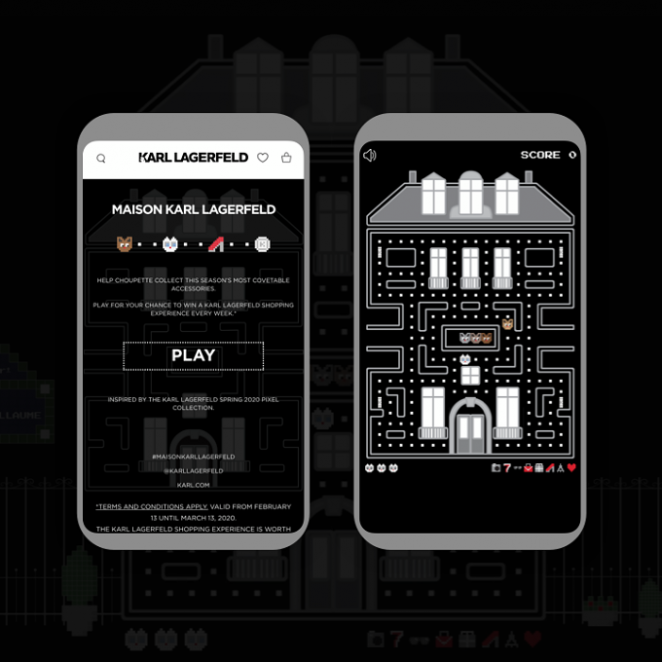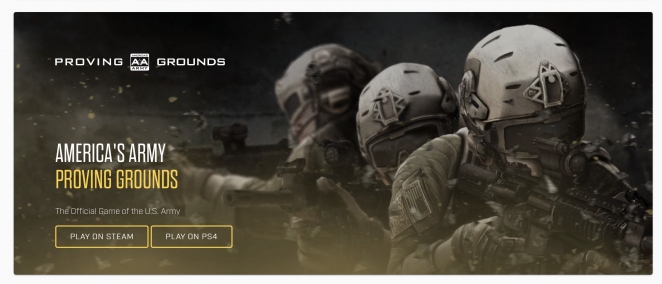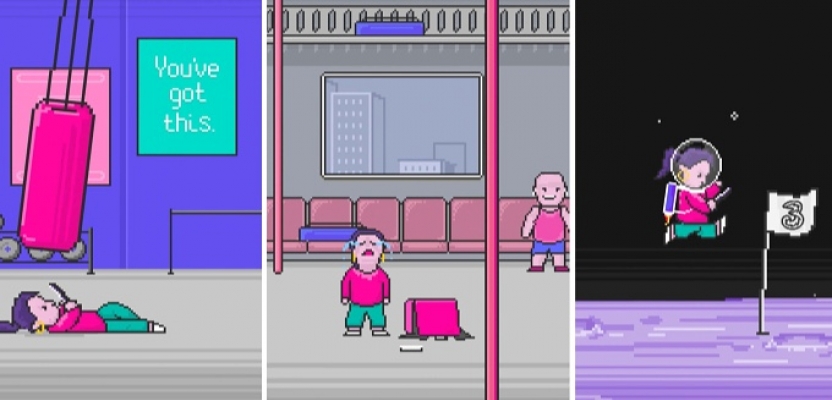You are having a stroll on the main high street, on your way to your favourite park in town. A few steps away from the main gates, you see a man running towards you. He looks scared.
You dodge the man
You keep going on your way. A few seconds later, a group of policemen runs past you, in the same direction as the man you just avoided. Perhaps you could have performed a good action today. A bit late for that now.
You stop the man
You stand in the man’s way. He looks dangerous, but uninterested in you at the moment. “Get out of my way” he shouts, foul breath changing your visage into a grimace. You keep standing in the man’s way as you see a group of policemen running towards you. The man pushes you away and tries to flee, but in a few seconds, the policemen are upon him.
Some stop to thank you for your help and deem you a good citizen. They let you know that you just stopped a much dangerous murderer.
Congratulations
You just proved that gamification works.

Image credit: SMACK Agency
Whether we like it or not, our brains are wired for play. We like playing with friends, partners, children and parents; we loathe losing at Monopoly, Cluedo, Crash Team Racing or any video game that you could ever think of. We are made to play and have fun with games. Some marketers know it very well.
Yet it wasn’t until the early 2010s that gamification started to be fully implemented into a series of aspects in our society. By drawing inspiration from the realm of gaming, some analysts and leaders realised that they could employ the same mechanisms of video games to improve customer retention, employee performance and productivity in general.
The Power of Gamification
Gamification is based on the concept of using game design elements in non-game contexts. If you’ve ever heard the phrase ‘carrot and stick,’ that may be an easier way to explain how gamification works. By enclosing the user into a cycle of endless goals and rewards, gamification makes it so that any person feels continually fulfilled and motivated to keep completing their tasks effectively, in turn leading to an increase in productivity. The most cynical ones among you will think of gamification as a glorification of capitalism – the subtle and despicable exploitation of something as innocent as play to serve the mechanisms of production. You’re right, but also not too much.
Gamification by itself may be seen as something like that. In truth, it fosters a positive, playful and healthy environment, and it makes even the most tedious tasks work well for any individual’s mental health.
Perhaps the most widespread use of gamification (so far) is in the realm of productivity. I reference it much often, but the Forest app is a great example as any. The app requires you to remain focused and ignore your phone for long sessions, even hours in a row, with the only purpose to make a pretty little tree grow in your personal garden. If you pick up your phone, your tree dies. If you don’t, your tree lives and you also collect coins in the process, which you can use to buy more seeds to plant.
You can see that this cycle of rewards enforces good behaviour. It also makes the Forest app much more memorable than many other (largely ineffective, personally) productivity apps out there. It is that sense of reward – that sudden, pleasant release of endorphins that keeps you going. Endorphins are addictive, as many gamers will know. Receiving a reward is a great way to make anything memorable.

Image credit: SMACK Agency
The use of gamification in advertising
A person’s average attention span will be around 8 seconds. With ads and campaign continuously competing for your attention, you will easily ignore the ones that do not resonate with you on a deep personal level, especially the most boring ones. Yet few things are as effective at consolidating your audience than gamification techniques.
Some advertisers know that very well. The most basic form of gamification has been around for ages in the shape of Loyalty Reward Programmes. Customers can enlist into a loyalty programme, perhaps receive a loyalty card, and once they reach a certain threshold, they will get a reward (usually a freebie). As simple as a Loyalty Programme may sound, two core mechanisms are at play simultaneously – one at the macro level, one at the micro level.
Placing a stamp on your card stimulates that sense of immediate reward which keeps you coming for more. You will go back to Starbucks or Sainsbury’s with your trusted loyalty card, because if you do, there will be a reward for you. At the same time, you are simultaneously looking forward to the bigger picture: once you reach 10 stamps, you will get free coffee. If you get 100 points, you may get a set of pots or a plushie, maybe a discount. You get what I mean.
Most gamification campaigns in advertising are quite abstract, but you don’t need to get too creative all the time. Sometimes your efforts can be as simple as implementing an actual game into your digital platform or campaign. Here on Creativepool, SMACK Agency is a specialist in the realm of gamification, but there have been cases recently of brands using Instagram stories to create actual games for the audience. The work of Gravity Road for Three UK was shortlisted into Annual 2020 last year, and it simply requires users to tap a story at the right time to have a character jump an obstacle – or trip.
On a much larger scale, the US Army did a similar thing on their website. The Army released a free-to-play, proper video game available on Steam and PS4, which gamers can download and try out to test real-life war situations. If they like what they see, they can then enlist in the army and serve the country. Surely looking at a game made entirely for some form of war propaganda is a bit jarring, but it is an interesting approach to gamification and it certainly grows the Army’s presence among a potential target audience.
Clearly game development can be costly, and it must be done right to avoid angering a much vocal community of gamers. If you don’t have the resources, sticking to creative ideas can work just as well. Many websites offer spaces for discussion and forums, and they implement badges or achievements to reward interaction.

Image credit: America's Army website
Challenge and Reward
The main concept here is the one of challenge and reward. In your gamification marketing, you want the user to feel challenged enough that the reward will be much awaited, and at the same time, you want to balance the reward so that it is proportionate to the effort. You may need to enlist a narrative designer or a game designer to strike the perfect balance, but of course you will also need some play-testing done. You don’t want to release a gamified campaign only to later realise that it is utterly boring to play.
I mentioned Monopoly earlier on, and not by chance. McDonald’s Monopoly programme is one of the most successful examples of gamification in the entire brandscape. Since its inception in 1987 in the United States, the game has been used nearly every year worldwide over summer, featuring cards, tokens and other elements from the popular board game to tempt players into a constant raffle that will sometimes yield interesting rewards (even millions of dollars in prizes).
If a brand is looking to build a community, they will usually tap into their sense of competition to generate brand awareness and results. People love some healthy competition, and giveaways and contests are great ways to get users involved into the life of any brand. This, however, leverages yet again our craving for challenges and rewards. We love a good challenge, we crave a good challenge, and apps such as the Nike + Run Club nurture that sense of fulfilment we all seek by offering us trophies, badges and simple rewards for our efforts.
Just go back to the beginning of this article for a minute. If you played along, you will have enjoyed the brief sense of challenge and unknown given by the running man, as well as the thrill of making a choice which may have consequences. Was it the right choice? Was it not? Game design works constantly in those terms, attempting to lure the player into a gameplay loop that is addictive, powerful and meaningful. In the end, you made your choice with the running man; who’s to say what kind of reward you would have received with another choice, given a true gamification context?

Image credit: Gravity Road for Three UK
How gamification will change advertising
Gamification is still a relatively young technique in advertising and beyond, having only been around for about 10 years. This means there’s still a lot to experiment, learn and measure about the true impact of gamification – but if the gaming industry is a multi-billion dollar one, that must mean something, right?
Gamification comes with the advantage of pulling the end user straight into the campaign itself. Over time, this will lead to more compelling and memorable ads, which configure themselves to be interactive and active rather than passive. The consumer will not be a backseat viewer anymore, as they will actively engage with the content, becoming integrating part of the campaign itself.
This will ultimately lead to campaigns becoming more collaborative. Thanks to social media, user-generated content is already on the rise, but it can only become more popular as gamification spreads across the industry. In this sense, it will be incredibly useful to learn from the greatest development companies who already do it the best way; big or small, there are countless ideas to get inspired by out there. Media Molecule, for instance, is famous for creating strongly community-focused games, enabling and empowering gamers to share their creative works with a worldwide community of players. Dreams and LittleBigPlanet are game-making machines, almost acting as engines in themselves, and the players love them for their capability to let them express their innermost creative spirit.
Sharing game content, interacting with a community and being an active part of it is what makes users engaged and affectionate towards any given brand. If they connect with each other, they will connect with the brand as well, and their sentiment will be heightened by the experience. Not to mention the fact that they will consensually share first-party data, which, in the cookie-less future, will be priceless to craft personalised campaigns and targeting.
Still, we shouldn’t fall prey of the logical fallacy forcing us into believing that gamification will take over advertising. Surely it is an interesting outlook, and it’s easy to get excited by the idea. However, it is worth remembering that game design is incredibly costly and developing an interactive campaign can get incredibly expensive. Especially if you choose to go full-gaming, as opposed to Gravity Road’s incredibly clever GramInvaders.
In short, gamification will certainly reshape a portion of advertising and the industry’s future, but I don’t personally see it taking over entirely – as much as I’d love to. I do believe there will be a balance. Traditional broadcasting of campaigns across media will take place alongside gamification, slowly but surely leading to a much more diverse, interesting and powerful advertising industry.







novi.digital Ltd August 27th, 2021, in the morning
Great article! I wrote a similar piece here: https://www.aaroncrewe.com/gamification-of-websites-how-to-gamify-your-user-journey/